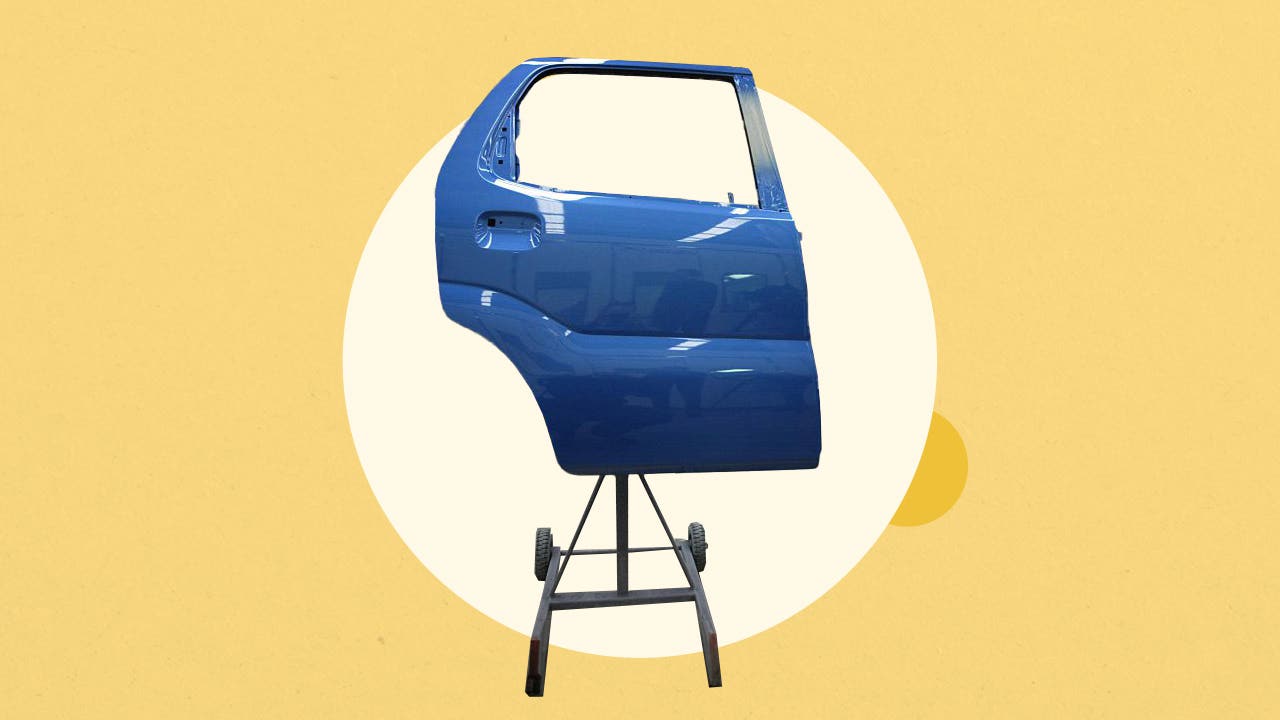The truth about 10 common car insurance myths

Have you ever heard that people with red cars pay more for insurance? Or that old cars don’t need full coverage? There are a lot of myths floating around about auto insurance. While some of them are incorrect interpretations of facts, others are down right inaccurate. Let’s bust some of car insurance’s biggest myths.
1. You can negotiate your premium
False! Negotiating the price you pay for car insurance is impossible.
Car insurance companies use proprietary algorithms to determine how much risk you present, and your rate reflects your risk level. State insurance departments approve and regulate rates, so they’re not subject to negotiations. If you get a lower rate from another company, that company’s algorithm views you as a lower risk. You can’t take that lower quote to other carriers and expect them to match it; those carriers can’t change their rating algorithms to get or keep your business.
But while you can’t negotiate the rates applied to your policy, you can impact your premium by adjusting the amount and type of coverage you carry, applying discounts to your policy or maintaining safe driving habits.
2. You don’t need medical payments if you have health insurance
Suppose you’re trying to save on your car insurance. In that case, you might be considering skipping medical payments coverage (MedPay), especially if you have health insurance. Medical payments coverage covers you and your passengers’ medical costs if you’re in an accident, regardless of fault. In some states, personal injury protection (PIP) is available instead of or in addition to medical payments coverage, and in no-fault states, all drivers must carry this coverage.
If you already have health insurance, medical coverage on your auto policy might seem redundant. But there are a few reasons to keep both types of coverage. First, limitations on your health insurance policy might leave you with out-of-pocket costs, like ambulance bills, that MedPay or PIP could cover. Your auto policy might also help to cover your health insurance deductible. And if you live in a state with PIP, you’ll get more than just health coverage through this first-party coverage: PIP can also cover lost wages, childcare costs and household services like cleaning and yard care.
3. Full coverage covers everything
“Full coverage” is an industry term that means your policy includes comprehensive coverage and collision coverage, which cover damage to your vehicle from various perils. But having a full coverage policy doesn’t mean you are covered for every eventuality. Intentional damage, for example, is never covered. Neither are routine maintenance and repairs caused by wear and tear.
A better way to think about full coverage is as a shorthand for policies that include physical damage coverage for your vehicle on top of any coverage required by state laws. While state laws never require that drivers insure their vehicle against physical damage, full coverage allows you to file claims for vehicle damage regardless of fault. If you lease or finance your vehicle, your lender will probably require you to carry full coverage until you pay off your car loan.
4. You only need minimum coverage
Every state sets minimum coverage requirements dictating how much auto insurance you must buy to operate a vehicle legally. In most states, minimum coverage includes a moderate amount of liability coverage to cover injuries or damage you cause behind the wheel. Some states also require uninsured/underinsured motorist coverage, personal injury protection (PIP) or medical payments coverage.
These coverage requirements won’t typically offer the financial protection most drivers need. For instance, minimum coverage in a state with $25,000/$50,000/$25,000 liability limits won’t cover more than $50,000 in medical bills or $25,000 in damages for a single accident — and with car values and health care costs rising, you could quickly exhaust your coverage and end up in a serious financial crisis.
Most insurance professionals recommend raising your liability limits above the minimum requirement; $100,000/$300,000/$100,000 liability insurance is a common recommendation. Raising your liability limits typically only costs a few dollars more per month. If you’re willing to pay for physical damage coverage, a full coverage policy is a worthwhile investment for most drivers who can’t afford to replace their vehicle out of pocket.
5. Your quote is what you will pay
A quote is just that — a quote. Many companies will give you a car insurance quote that represents their best estimate of what you’ll pay based on the information you provide. If that information isn’t accurate, your quote could change when you are ready to purchase the policy.
Auto insurance companies pull two reports — a Comprehensive Loss Underwriting Exchange (CLUE) report and your Motor Vehicle Record (MVR) — before presenting you with the final price and allowing you to purchase coverage. These reports show your history of insurance claims and traffic incidents. If you didn’t include this information on your application, or if the information you included wasn’t correct, you’ll likely see an increase in your final price.
6. All car insurance companies are the same
While most car insurance companies offer similar coverage, other factors set them apart. Each company has its own rating system, which means you’ll get different rates from different companies even for the same coverage.
Different companies also have different discounts and policy add-ons that you can use to customize your coverage. If you want a policy that covers things not typically covered by standard insurance options, you may need to look for a carrier offering the proper endorsements. Possible add-ons to look for include:
- Gap insurance
- Accident forgiveness
- Rideshare insurance
- Full glass coverage
- Rental car reimbursement
- Roadside assistance
Insurance companies also differ in how they do business. Some carriers, like State Farm and Erie, prioritize a more traditional experience focusing on local agents. Others, like Geico and Progressive, put more emphasis on digital tools, like online portals and mobile apps.
Finally, third-party customer satisfaction scores and financial strength ratings vary widely, and these can help you develop a well-rounded view of a carrier.
7. A not-at-fault accident won’t affect your rates
If the other driver’s coverage takes care of everything and you don’t turn in a claim to your insurance company, or if you and the other driver handle the issue out of pocket, this should be true. Unfortunately, if you turn in a claim to your insurance company — even if you aren’t at fault — there’s a risk that your premium could increase.
You shouldn’t be penalized or surcharged for the claim since it wasn’t your fault, but if you have a claim-free car insurance discount, you could still lose it, which may result in a higher premium.
8. New cars are always more expensive to insure
It’s a common assumption that insuring a new car will always cost more than insuring a used vehicle. But that’s not the full story.
New vehicles usually come packed with the latest safety enhancements. These innovative features can play a pivotal role in preventing accidents or reducing injury risk. As a result, insurance companies might view such cars as lower risk and offer a lower premium to insure the vehicle, which could benefit policyholders. Also, some carriers offer a new vehicle discount, which could help defray the insurance cost.
That said, new car technology comes with added upfront costs and higher repair bills, which can translate into elevated insurance premiums. If you’re considering a new car purchase but are worried about increased insurance costs, it may be a good idea to compare rates from a few companies for your current car and the model you’re considering.
9. Drivers with red cars pay more for insurance
The theory goes that drivers of flashy red vehicles are more likely to engage in risky driving behaviors and pay more for car insurance. Thankfully, this is a complete myth for anyone who owns a red car.
Your car insurance company probably doesn’t know what color your car is. Car insurance companies don’t use color to rate your policy. Instead, they’ll factor your vehicle’s make and model, age, safety features and other factors into your premium. The exception would be if you pay extra for coverage on a custom paint job, but even then, the additional price is more about the custom paint than the color itself.
10. If someone else drives your car, they cover any damage
The myth that insurance follows the driver, not the car, rounds out our list. It’s wrong; it’s the other way around. Car insurance follows the car, not the driver.
If you loan your car to a friend and they cause an accident, your policy will be the primary insurance. Your friend’s policy could kick in as secondary coverage, but only if the limits on your policy were used up. Some policies may have driver exclusions, too, which could mean that no one else is covered to drive your vehicle, so be sure you understand how your policy works before you permit someone to drive your vehicle, so be sure you understand how your policy works before you permit someone to drive your car.
The bottom line
Understanding the truth about car insurance — from how it’s priced to when and how your coverage applies — can help you to make informed decisions about your policy in an increasingly challenging market. If you have questions about your policy, you may want to talk with your insurance agent or look for a carrier with more transparent practices.
You may also like

How a speeding ticket impacts your insurance in Nevada

How much car insurance do I need?

What are the different types of car insurance coverage?



